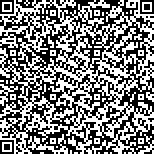本文已被:浏览 887次 下载 852次
投稿时间:2023-06-08
投稿时间:2023-06-08
中文摘要: 开放科学蓬勃发展,推动着全球科学研究范式的变革。开放科学治理旨在逐步加大科技进步过程的透明性和全球参与度,确保全球范围的低成本开放,加快成果的全球传播和共享,提升全民的科学素养和人文素养。随着开放科学发展势头愈发强劲,一系列挑战逐渐涌现。通过对开放科学治理框架模型进行分析研究,有助于进一步梳理治理逻辑,明确治理主体和治理机制,将有效推进我国开放科学治理体系构建,加速我国科学技术发展,助力我国于2040—2050年成为全球知识共同体的“领航人”之一,推动我国世界科技强国战略目标实现。
Abstract:Open science is thriving and driving a global paradigm shift in scientific research. Open science governance is designated to gradually increase the transparency and global participation in the process of scientific and technological progress, ensure low-cost openness around the world, accelerate the global dissemination and sharing of results, and improve the scientific and humanistic literacy of the people. With the development trend of open science becoming more and more powerful, a series of challenges emerge gradually. By analyzing and studying the open science governance framework model, it helps to further sort out the governance logic, clarify the governance subjects and governance mechanisms, which will effectively promote the construction of open science governance system, accelerate the development of science and technology, help China become one of the leaders of the global knowledge community in 2040–2050, and promote the realization of the strategic goal of becoming a world power in science and technology.
keywords: open science open science governance governance framework evaluation system world science center
文章编号: 中图分类号: 文献标志码:
基金项目:中国科学院学部咨询评议项目(2022-X01-B-008)
| 作者 | 单位 |
| 袁亚湘1 | 中国科学院数学与系统科学研究院 北京 100190 |
| 魏鑫2 | 中国科学院计算机网络信息中心 北京 100190 |
| 汪洋2* | 中国科学院计算机网络信息中心 北京 100190 |
| 周园春2 | 中国科学院计算机网络信息中心 北京 100190 |
引用文本:
袁亚湘,魏鑫,汪洋,周园春.我国开放科学治理框架研究[J].中国科学院院刊,2023,38(6):818-828.
YUAN Yaxiang,WEI Xin,WANG Yang,ZHOU Yuanchun.Research on Open Science Governance Framework Model[J].Bulletin of Chinese Academy of Sciences,2023,38(6):818-828.
袁亚湘,魏鑫,汪洋,周园春.我国开放科学治理框架研究[J].中国科学院院刊,2023,38(6):818-828.
YUAN Yaxiang,WEI Xin,WANG Yang,ZHOU Yuanchun.Research on Open Science Governance Framework Model[J].Bulletin of Chinese Academy of Sciences,2023,38(6):818-828.


